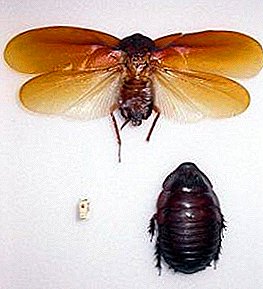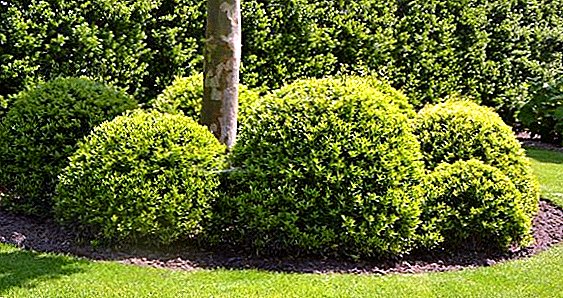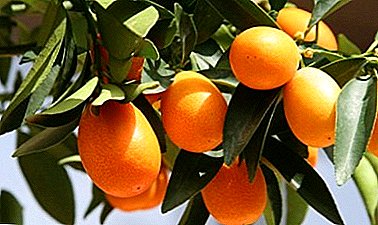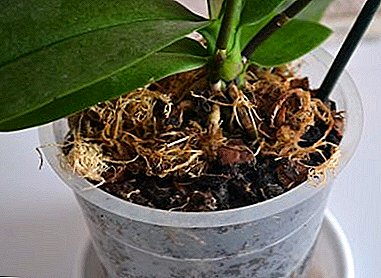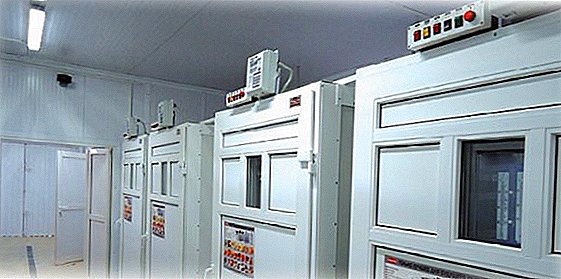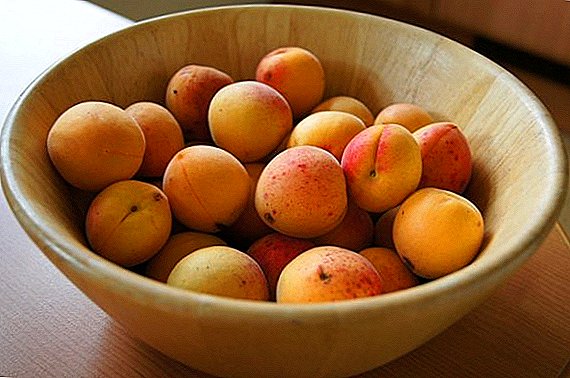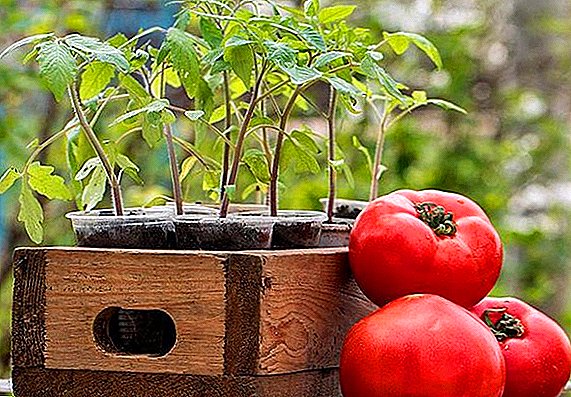 Growing tomatoes with seedlings provides a much better survival rate and yield than planting seeds directly in open ground, as evidenced by many years of work experience of many gardeners. However, this process has a number of features and subtleties, which would be worth talking in more detail. In this article you will find all the necessary information about tomato seedlings, how to grow it, when to begin this process and how to take care of it in the future.
Growing tomatoes with seedlings provides a much better survival rate and yield than planting seeds directly in open ground, as evidenced by many years of work experience of many gardeners. However, this process has a number of features and subtleties, which would be worth talking in more detail. In this article you will find all the necessary information about tomato seedlings, how to grow it, when to begin this process and how to take care of it in the future.
When to start?
The cultivation of tomato seedlings at home should begin no earlier than 50-60 days before the date of the proposed transplant of young plants in open ground.
Peppers, cabbage, beets, zucchini, cucumbers, eggplants, parsnips, onions, and flowers are also grown by the seedling method.
It must be remembered that it takes about 7-10 days to give the first shoots for tomatoes, so the seedlings should be kept at home after the first shoots for 40-55 days on average.

Did you know? In the modern world there are about 10 thousand different varieties of tomatoes, the smallest of which have a diameter less than 2 centimeters, and the weight of the largest passes for 1.5 kg.
Proper determination of the time of sowing plays an extremely important role for the successful growth of the bush and its abundant fruiting. This period varies depending on the weather conditions prevailing in the places where you live, and on average it looks something like this:
- South Russia and Ukraine: seedlings are sown from February 20th to mid-March.
- the center of Russia: the best time is from mid-March to early April.
- North of Russia: from the beginning to the middle of April.
When you try to understand when to start sowing tomatoes on seedlings, you can also start from the knowledge of when the end of the last spring frosts is expected in your area. It will be enough to count 50-65 days back from this date and carry out the sowing on the calculated day. In that case, if you intend to make a landing in greenhouse conditions or on your balcony, then you can begin sowing even a few weeks earlier.

Landing features
Before you grow tomato seedlings at home, it is good to understand for yourself some of the subtleties and key indicators necessary for its successful growth and development.
Growing conditions
The most important requirement for growing seedlings of tomatoes is creating enough light for them. To this end, it is recommended to put them on windows facing south, it is desirable that natural light is not diminished by various shading factors, such as trees, walls or a fence. In case of lack of natural lighting, it is recommended to use special lamps.
Did you know? Tomatoes are one of the most popular vegetables consumed by humans. Annually in the world over 60 million tons of these fruits are sold.
Young seedlings must be provided with sufficient moisture, which is recommended use humidifiers or sprayers. It is desirable to carry out the treatment daily, and in hot conditions - and twice a day.

It is recommended to provide your seedlings with a comfortable temperature regime. Optimal temperature for seedlings in the daytime it fluctuates around 18-25 degrees, and at night - 13-16 degrees.
Soil disinfection
If the soil is taken from the natural environment, the presence of various disease-causing agents is very likely. To avoid such "surprises", it is recommended to buy soil mixtures in specialized stores, but even such soils can sometimes be fraught with danger.
In order to protect their seedlings from various diseases and pests It is recommended to carry out soil disinfection using one of the following methods:
- heat the soil in the oven at a temperature of 160-180 degrees for 15-20 minutes;
- process the soil in a microwave oven at maximum power for 2-3 minutes;
- placed in a pot with small drainage holes, the soil portionwise pour boiling water;
- Moisten the soil laid out in an even layer with a strong solution of potassium permanganate.

You should not start planting seedlings on the newly treated soil. After processing, it will be better to place it in the open air under the sun for 2 weeks, so that the reproduction process inside it of useful soil animals will begin.
Seed preparation
Seeds, by analogy with the soil, can be a breeding ground for various infections and pests, therefore, in order to protect your seedlings from death, they also need a certain treatment before planting. The following are ways you can process your seeds:
- With potassium permanganate. Per 100 ml of water, you must take 1 g of potassium permanganate. Seeds, previously wrapped in cheesecloth, should be placed in such a solution for 10-15 minutes. Overexposure of seed in such a solution is fraught with a decrease in germination, so be careful.
- With the help of soda solution. Per 100 ml of water, take 0.5 g of soda. In this solution, the seeds must be kept for 24 hours. In addition to the disinfecting properties, this solution will also contribute to the earlier fruiting of your tomatoes.
- With the help of aloe juice solution. For each part of aloe juice you need to take as much water. In this solution, the seeds are soaked for 12-24 hours. This solution also contributes to increasing yields, improving the quality of fruits and enhancing the immune function of the plant.
- With the help of the solution "Fitosporina". In the finished solution, the seeds are aged for one to two hours.

Sowing scheme
In the pre-filled fertile decontaminated soil planting containers (preferably, it was oblong) make furrows, the depth of which should not exceed one centimeter.
The distance between the grooves should be no more than three or four centimeters. Lay the seeds in the furrows so that the distance between them is not less than 1 cm. Sprinkle the seeds with a thin layer of fertile soil.
Important! The thicker the seedlings will be planted, the earlier they will have to pick them.
From above it is recommended to stretch the film or lay the glass in order to ensure the seedlings high relative humidity. For successful sprouting seedlings need a temperature of about 30 degrees, so it is recommended to place it near the source of heat.
Seedling care
Proper care is one of the guarantors of a rich and tasty tomato crop, although it is not too different from caring for other seedlings, it still has some subtleties, which will be discussed further.
Watering
Seedlings are watered with a spray gun or a humidifier, as a jet, beating out of a watering can or other container with a large neck diameter, can damage the tender root system of the seedling. It is necessary to water as at least once a day, and in hot weather - it is better twice.
It is necessary, nevertheless, to remember that an excess of moisture can cause the occurrence of a fungal disease that can be eliminated by removing the upper contaminated soil layer and processing it with a solution of a fungicide.
Top dressing
Tomato saplings need the first feeding after 2-3 weeks after the appearance of the first shoots. After that, the best schedule for making supplements will be weekly. Fertilizers based on organic substances, for example, diluted and fermented bird droppings or manure, are best suited for seedlings.
Wood ash, yeast, whey, banana peel, onion peel, and egg shells can be used as top dressing.
It is recommended to bring additional feeding early in the morning or late in the evening, after the sun has gone down, and only after watering. Commercial fertilizers can also be used for fertilizing, but in this case only half of the dose indicated on the package should be used.

Additional lighting
Young seedlings, especially in the first time after the emergence of shoots, need a large amount of light, so immediately after they are out of the ground, they must be placed on the most illuminated window sill. However, if this happened at the end of February or the beginning of spring, there would still not be enough natural lighting for them.
It is recommended that in the first 2-3 days after the appearance of the first shoots, seedlings be placed in conditions of constant highlighting, since, according to many gardeners, this stimulates germination and guarantees the best yield. After that, you can switch to the usual 16-hour daylight provided by natural conditions.
Picks
If the seedlings were planted in heaps, the first pick of the seedlings of tomatoes is carried out after the appearance of the first true leaves, which usually occurs by 10 days after sowing. A transplant at this age can often have a detrimental effect on plants, because the root system is still very delicate and easy to damage. This pick is made in cups of 200 ml.
Important! It is not necessary at the first transplant, despite the advice of many gardeners, to do the pinching of the central root - this will contribute to delaying the development of seedlings for at least one week.

A few weeks later, a second transplant of plants is performed, this time in pots, the volume of which is about 1 liter. When transplanting, it is important to remember the tender structure of the young root and be sure to produce it with a clod of earth from the first container.
Nip
It is necessary to pinch the shrub so that the stepchildren do not pull nutrients onto themselves and do not slow down the growth of the main stem. They are formed in the axils of young leaves, and they are recommended to be removed before the stepchildren reach 5 cm in size, because only in this case the bush will safely remove their removal.
Type of pinching depends on the type of bush. For tall bushes in the best way nip in one stem. In addition to tearing off the stepsons for such varieties, it is recommended to pinch the main stem after the planting, so that the nutrients go not into the stem, but into the fruit.
With double stalk system one more stepson is left who will only be slightly behind in development. This method ensures greater yield than the first, but significantly slows down the process of ripening fruits.
Three-stem method similar to the double stem in everything except the number of abandoned stepchildren. The best results are shown in early varieties of tomatoes, because, just like double-stem trees, it slows down the ripening processes.

Hardening
Hardening sprouts can be started immediately after the appearance of 3-4 of these leaves. The most suitable temperature for starting these activities varies in the area 15-20 degrees. You should not zealous with fresh air, because its excess can be detrimental to young plants.
It is recommended to begin tempering with a 5-minute airing, gradually increasing the time intervals. Hardened sprouts show much better survival rate than their pampered cousins and are able to quickly catch up in the growth of seedlings, which did not harden, when landing in open ground.
Popular mistakes novice gardeners
Among the most common mistakes that occur in inexperienced gardeners, the following should be highlighted:
- excessive or abundant watering;
- non-compliance with the temperature or light regime of plants;
- initial unsuitability of the selected variety for growing at home;
- too early sowing of seeds in pots;
- late picks;
- insufficient hardening or lack of it;
- unsuitable or contaminated ground.
We hope that this article has helped you to clarify for yourself how to plant tomatoes for seedlings. Remember that a truly seasoned temperature, light and irrigation regime is 70% guaranteed success. Another 10% is timely hardening and proper transplantation. The remaining 20 are your concern and warmth for future majestic plants.





